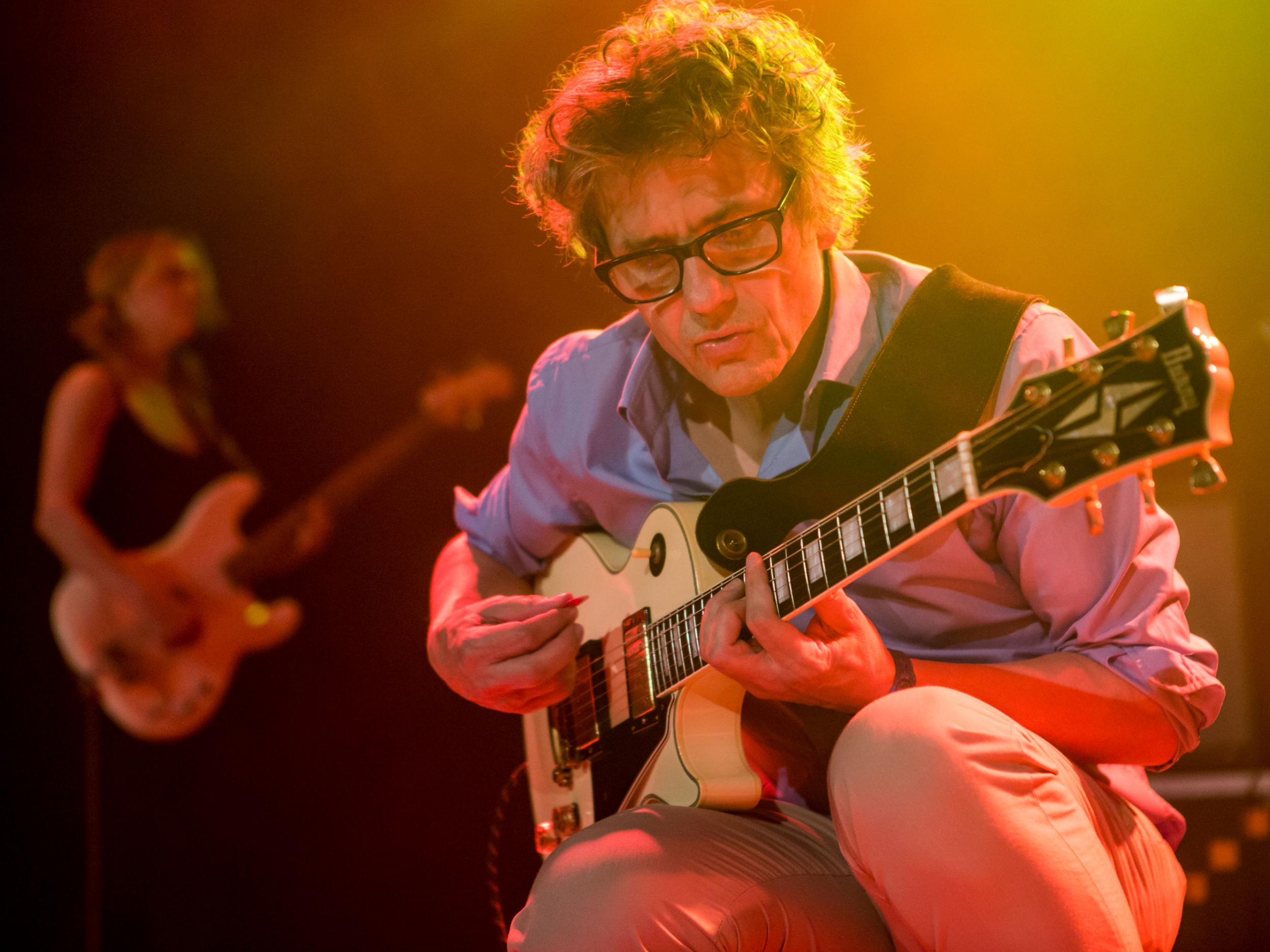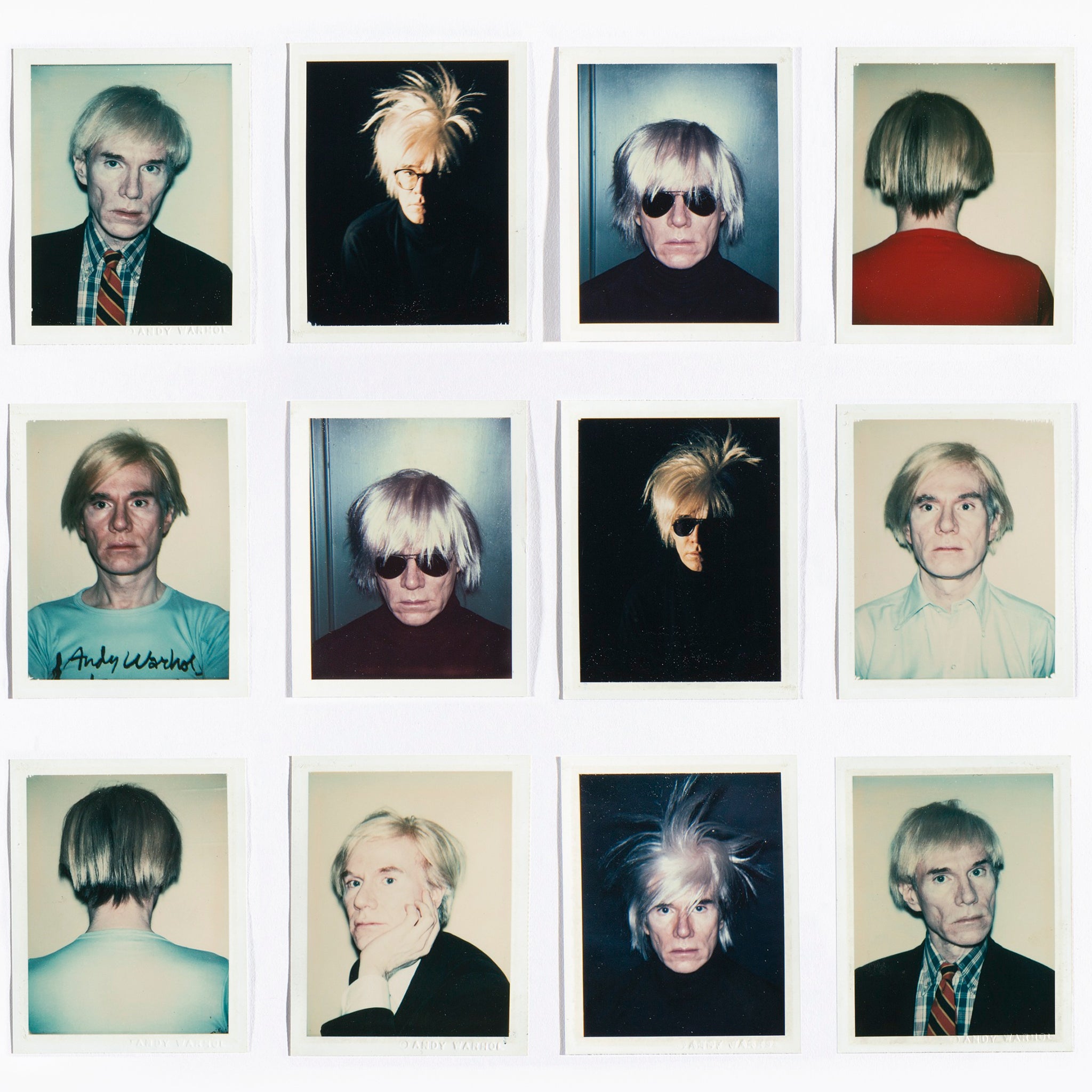Exposed: Songs for Unseen Warhol Films, gig review: rock stars pay tribute with original scores
Tom Verlaine from Television and Martin Rev from Suicide were among the artists assembled by Dean Wareham from Lux to pay tribute to Warhol

Dean Wareham, formerly of eighties slow rock band Galaxie 500 and the dream pop act Luna, still gets nervous on concert days even after performing his soundtracks to Andy Warhol films almost 100 times in the last decade.
“I worry about having to introduce people,” he said from the dress rehearsal of Exposed: Songs for Unseen Warhol Films, a recent Barbican concert accompanying a screening of 15 such films.
The Andy Warhol Museum in Pittsburgh approached Wareham after they found a trove of forgotten films in a Pennsylvania warehouse.
Wareham had been touring “13 Most Beautiful Songs”, his scores for Warhol screen tests, for five years and 85 concerts and was looking for a new project. As the technicians worked to digitize the tape, Wareham worked with the museum curators to whittle down a selection of 15 short films and excerpts to set to music.
He enlisted help from his favourite guitar player, Tom Verlaine of Television, and Martin Rev, maverick synth player from the rock band Suicide.
After chance meetings with Eleanor Friedberger, former frontwoman of The Fiery Furnaces, and Bradford Cox, the brilliant mind behind Deerhoof and Atlas Sound, on buses in and out of the Spanish rock festival Primavera, they too got invites. Everyone said yes. “It’s hard to say no to Warhol,” Wareham said.

On the night, Wareham introduced Eleanor Friedberger with a faint quiver in his voice.
“I said I wanted Donovan,” Friedberger told the audience before her first song. “And Dean said I could have him.”
Donovan’s baby face flickered to life on the giant screen behind her, forever gap toothed and smooth-skinned on a visit to The Factory while he was promoting Sunshine Superman in New York, 1966.
It took him several seconds to look at the camera. While he fidgeted and picked his teeth, Friedberger sang a poem by the English eccentric Helen Adam, a predecessor to the Beat Generation, about escaping New York by taking the train to Coney Island. Donovan looked like he would take that train.
Enjoy unlimited access to 100 million ad-free songs and podcasts with Amazon Music
Sign up now for a 30-day free trial. Terms apply.
ADVERTISEMENT. If you sign up to this service we will earn commission. This revenue helps to fund journalism across The Independent.
Enjoy unlimited access to 100 million ad-free songs and podcasts with Amazon Music
Sign up now for a 30-day free trial. Terms apply.
ADVERTISEMENT. If you sign up to this service we will earn commission. This revenue helps to fund journalism across The Independent.
Marisol, a stop-motion film of the sculptor Marisol Escobar, was transformed by Friedberger’s announcement that the artist died just a few weeks earlier.
Friedberger chose words from a 1965 New York Times interview with her, set to a simple four-minute rock song.
We watched as Marisol, known for her reticence, paced her studio and posed beside her work. Friedberger sang of her growing confidence and how she felt responsible for her own success. For a moment that vibrant, silent woman was revived.
Each of the musicians took a different approach to scoring. Tom Verlaine used pastoral melodies and twinkling harmonics on an electric guitar for a black and white shot of Jill Johnston, dancing in a forest with a rifle, on the day that John F. Kennedy was shot.
Martin Rev, dressed in lime green shades and shiny leather trousers, assaulted a keyboard at ear-splitting volume in a noise-rock accompaniment to Allen Ginsberg, Jack Kerouac and pals trying to squeeze onto a sofa.
Dean Wareham’s trio of compositions were by far the most reverential. He composed questing Americana for roaming shots up and down the body of Susan Bottomly, clad in sequins, in a promotional video for a 1966 fashion launch.
Bradford Cox wasn’t at the show because of a family bereavement, but his recorded compositions vibrated with white noise, slipping in and out of a Velvet Underground chug.
Cox got the one film in which Warhol himself appears. He set a tooting whistle to shots of the actor Taylor Mead aping around with hats, cigarette boxes and his own shadow. The whistle dropped out and twinkling guitar sounds warmed the audience from all sides. Suddenly Warhol appeared, face obscured by shadows, smiling bashfully.
Wareham said when he gets nervous onstage, he only needs to turn around and look at the films. “They’re a real treat,” he said. “I stop worrying. I think this is a once in a lifetime chance to see the films - they’re not going to be on YouTube.” If Warhol was alive, he’d probably approve of YouTube’s bottomless pit of rehashed and ripped content. But he might be surprised to learn that his early film sketches could inspire such violently different musical responses, fifty years after they were made.
Join our commenting forum
Join thought-provoking conversations, follow other Independent readers and see their replies
Comments